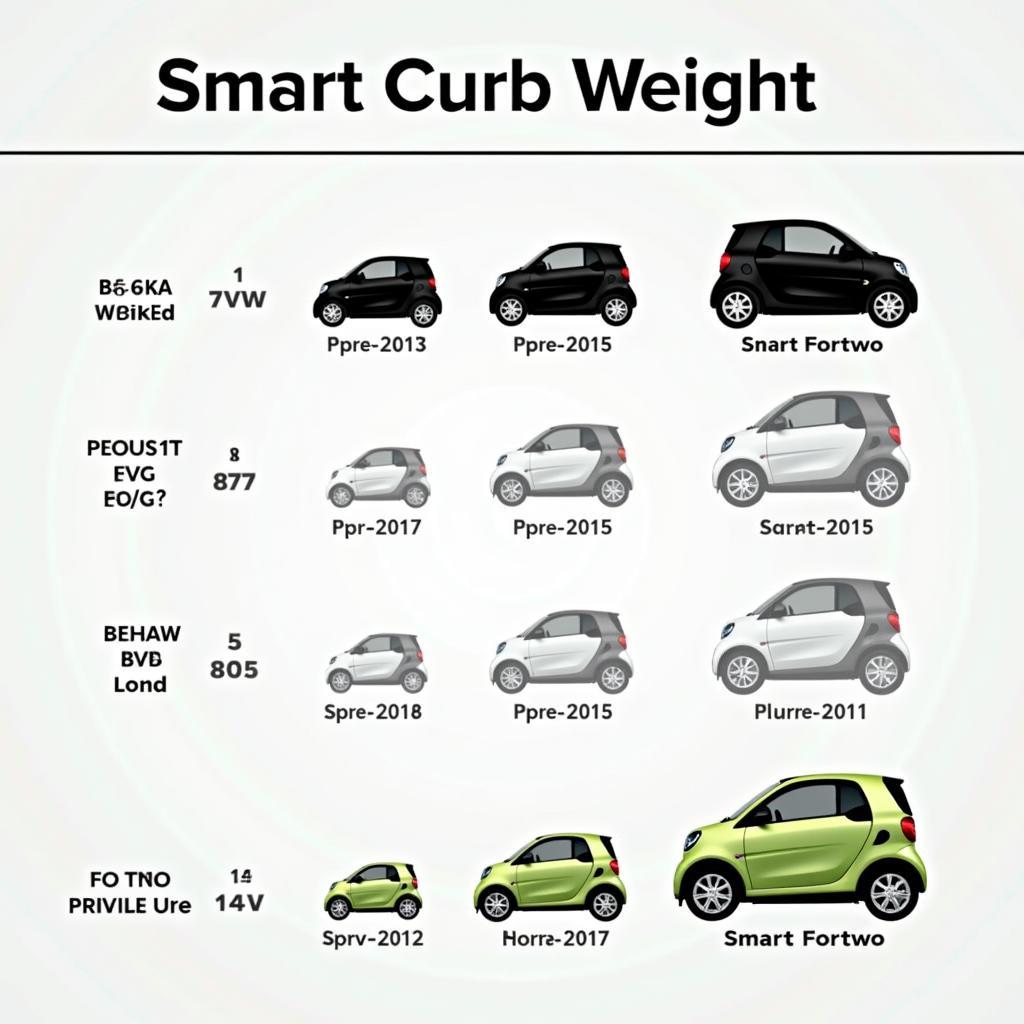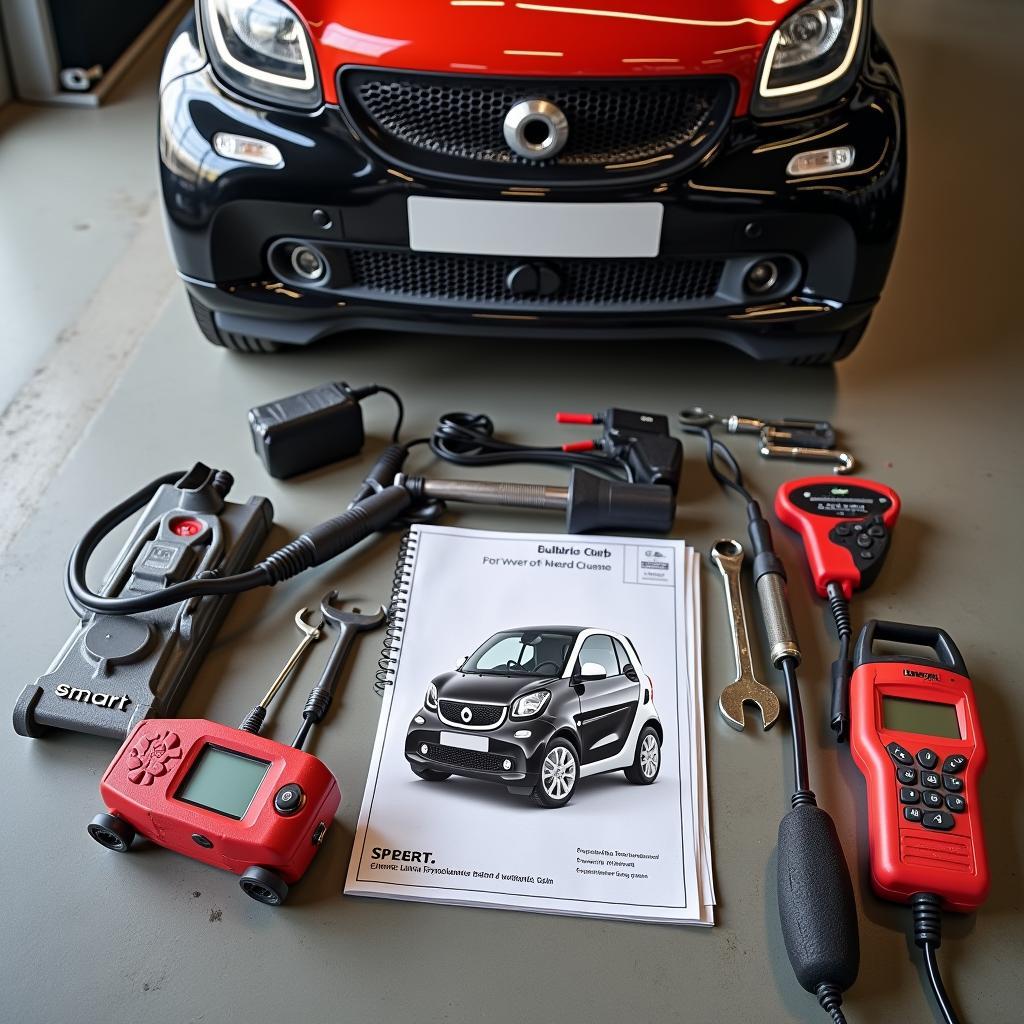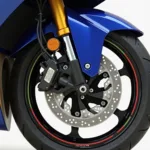The Smart Fortwo is known for its compact size and agility, especially in city traffic. But how much does such a small car actually weigh? In this article, you’ll learn everything you need to know about the curb weight of the Smart Fortwo, including important details and helpful tips for repair and maintenance.
What Does “Curb Weight” Mean?
The curb weight of a vehicle refers to the weight of the vehicle without driver, passengers, luggage, fuel, and other payload. It does, however, include all operating fluids such as engine oil, coolant, and brake fluid. Curb weight is an important factor for calculating the permissible total mass and plays a role in vehicle taxation and performance evaluation. From a technical perspective, curb weight is crucial for driving performance, braking distance, and fuel consumption. As Dr. Klaus Müller, an expert in vehicle dynamics, emphasizes in his book “The Physics of the Automobile”: “Curb weight is a fundamental quantity for understanding driving behavior.”
The Smart Fortwo Curb Weight in Detail
The curb weight of the Smart Fortwo varies depending on the model and equipment. Older models (before 2015) typically weigh between 730 and 750 kg. Newer models (from 2015) range from 790 to 900 kg, depending on the engine and equipment variant. The electric version, the Smart EQ Fortwo, is slightly heavier due to the battery, weighing around 1085 kg. You can also find this information in the vehicle registration document or on the manufacturer’s website.
 Smart Fortwo Curb Weight Comparison by Model
Smart Fortwo Curb Weight Comparison by Model
Why Is Curb Weight Important for Repair?
Curb weight is relevant for repair work on the Smart Fortwo as it influences the selection of correct replacement parts and tools. For example, car lifts and jacks must be dimensioned according to the vehicle mass. The calculation of required braking force and the adjustment of the suspension also depend on the curb weight. A wrong understanding of the curb weight can lead to errors in repair and, in the worst case, to safety risks.
Frequent Questions About the Smart Fortwo Curb Weight
- Where can I find the curb weight of my Smart Fortwo? You can find the curb weight in the vehicle registration document (Part I) under figure G.
- Does curb weight affect fuel consumption? Yes, a higher curb weight generally leads to higher fuel consumption.
- Can I reduce the curb weight of my Smart Fortwo? The curb weight can be slightly reduced by removing unnecessary components, such as the rear seat. However, such modifications should always be discussed with a specialist.
 Smart Fortwo Repair and Maintenance
Smart Fortwo Repair and Maintenance
Curb Weight and Performance
A lower curb weight can lead to better acceleration and more agile handling. In the case of the Smart Fortwo, which is primarily designed for city traffic, agility plays a larger role than absolute performance. As engineer Anna Schmidt states in her article “Lightweight Construction in Automotive Engineering”: “An optimal curb weight is the key to the perfect balance between performance and efficiency.”
Further Questions About the Smart Fortwo?
Do you have further questions about the repair, maintenance, or curb weight of your Smart Fortwo? Visit our website autorepairaid.com for more information, helpful tips, and guides. We also offer a wide selection of diagnostic tools and specialist literature for DIY repair.
Need Professional Support?
Contact us! Our car repair experts are available 24/7 and will be happy to assist you.
 Car Repair Experts
Car Repair Experts
Summary
The curb weight of the Smart Fortwo is an important factor that is relevant for both technical assessment and practical repair. Knowing the curb weight helps you select the right tools and replacement parts and contributes to the safe and efficient execution of repair work. Don’t hesitate to contact us if you have questions or need professional assistance. We are happy to help!

